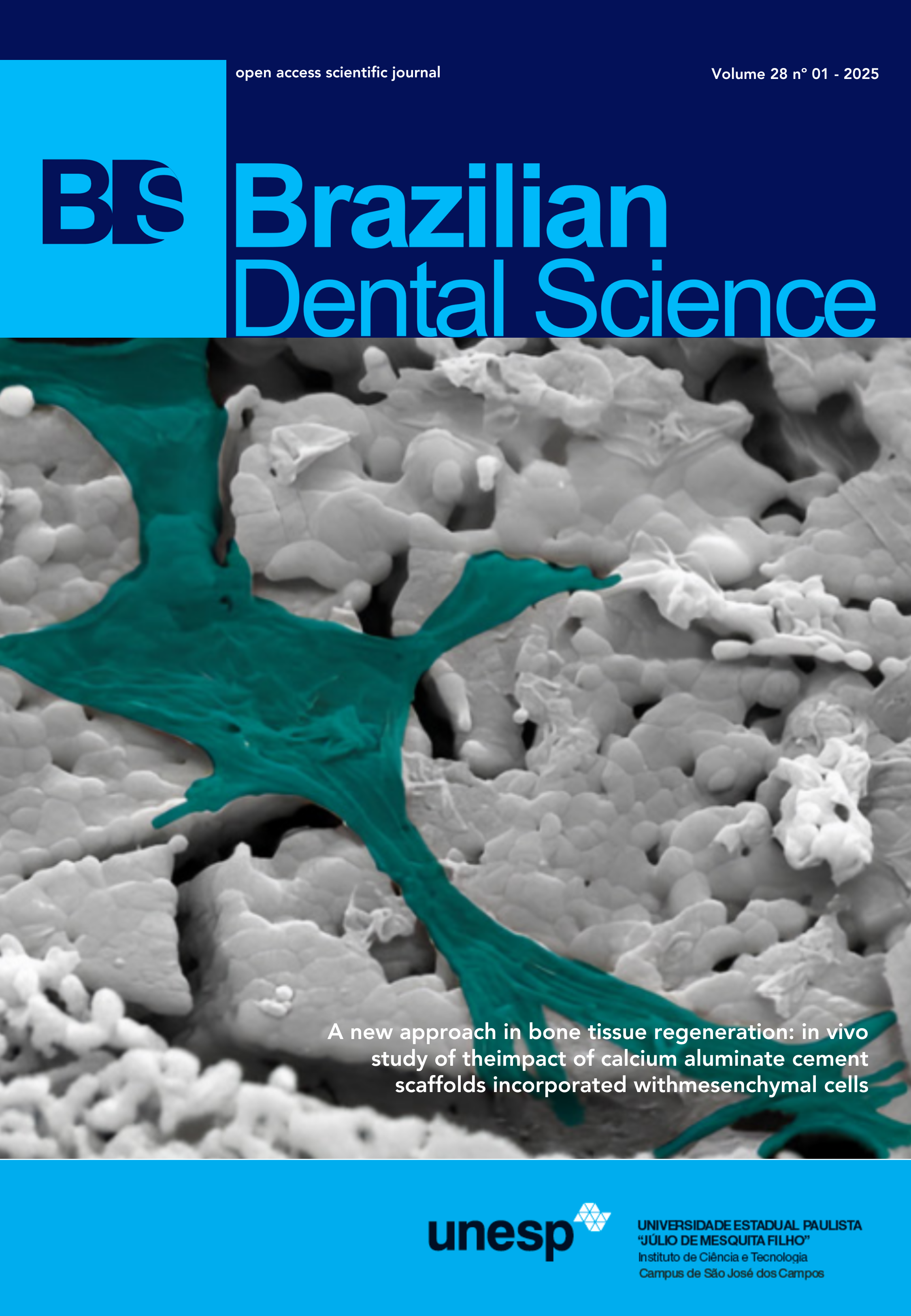In vitro investigation of flower-like micro-nano topography modifications to improve titanium implant surface properties
DOI:
https://doi.org/10.4322/bds.2025.e4663Abstract
Objective: The surface modification of titanium implants has demonstrated significant potential in enhancing the surface characteristics of the implants, improving their performance, and minimizing the risk of infection. This study examines the advantages of combining acid etching and alkaline heat treatment to enhance titanium implant surfaces and evaluate their antibacterial effectiveness. Material and Methods: Titanium was divided into four groups: machine surface (MA), samples subjected to a single acid etching (MR), and samples that experienced both a single acid etching and two distinct alkaline heat treatment protocols (MN1 and MN2). The surface properties (topography, chemical composition, surface roughness, and wettability) and antibacterial evaluation against Porphyromonas gingivalis were evaluated. The statistical significance of differences among the groups was determined using ANOVA and Tukey’s Post-Hoc Test (P<0.05). Results: The MN group significantly transformed titanium surfaces into a micro-nano flower-like topography with hydroxyl and sodium titanate structures. The highest surface roughness was shown in MN1 (Sa= 7,58 ± 0,64; Sq 9,78 ± 0,8) (P<0.05) and the lowest wettability were shown in MN2 (25,75 ± 8,2) (P<0.05). Conversely, MN2 exhibited the lowest wettability, measured at 25.75 ± 8.2 (P < 0.05). Antibacterial assessments revealed a notable reduction in the growth of Porphyromonas gingivalis on the MN2 modified surfaces at 27.43 ± 10.43% (P < 0.05). Conclusion: The combination of acid etching and alkaline heat treatment has shown the ability to create a micro-nano surface with outstanding properties and significant antibacterial effects. This advancing titanium dental implant technology presents a valuable alternative for improving clinical outcomes in dental applications.
KEYWORDS
Antibacterial agents; Dental implant; Medicine; Surface properties; Titanium.
Downloads
Published
How to Cite
Issue
Section
License
Copyright (c) 2025 Brazilian Dental Science

This work is licensed under a Creative Commons Attribution 4.0 International License.
Brazilian Dental Science uses the Creative Commons (CC-BY 4.0) license, thus preserving the integrity of articles in an open access environment. The journal allows the author to retain publishing rights without restrictions.
=================




























